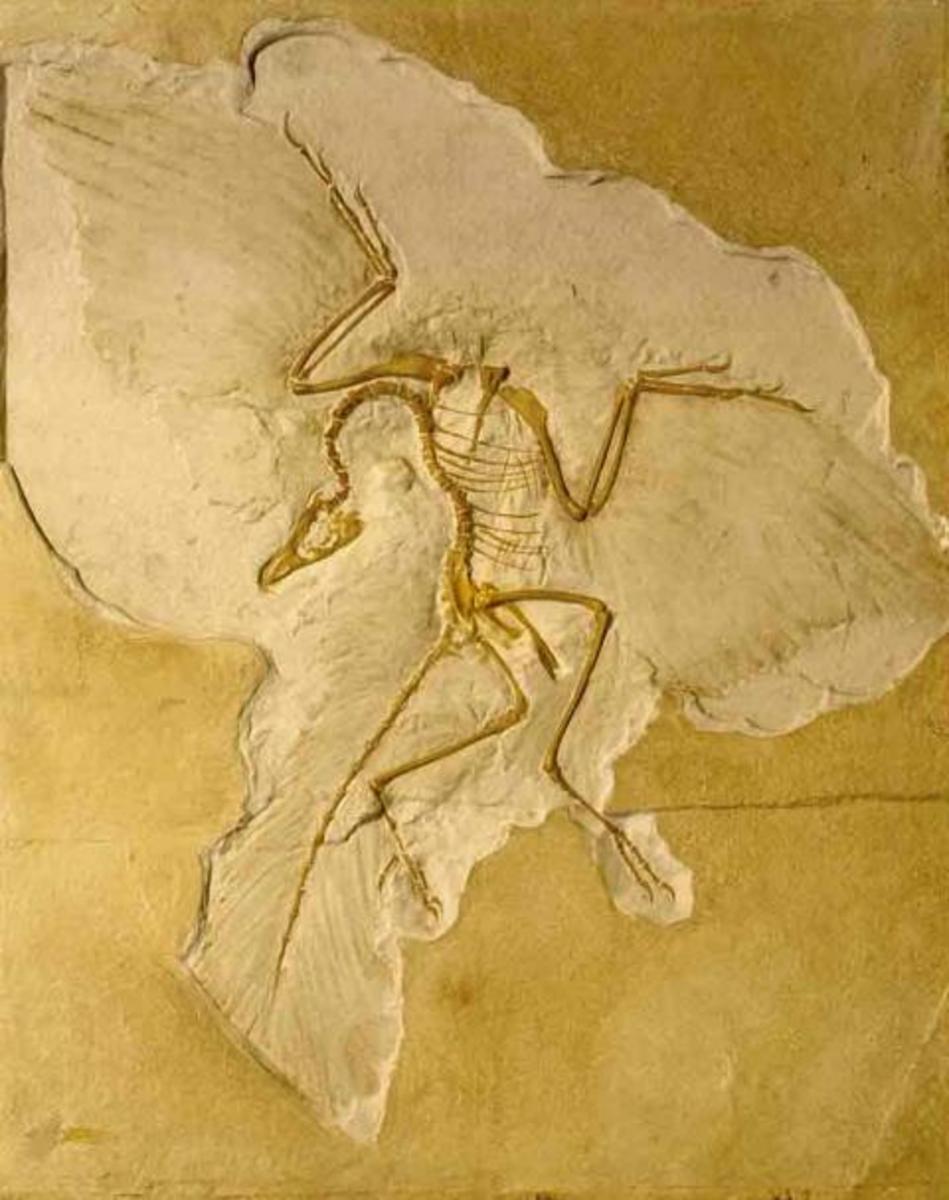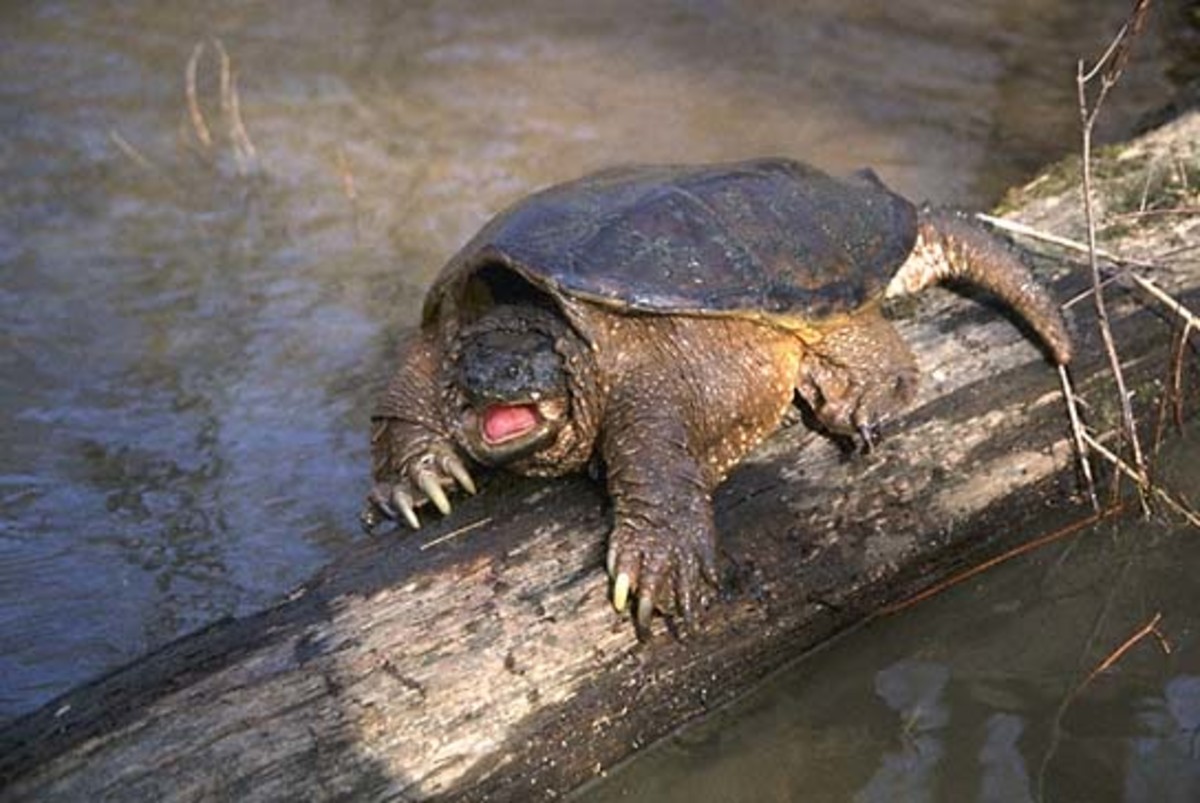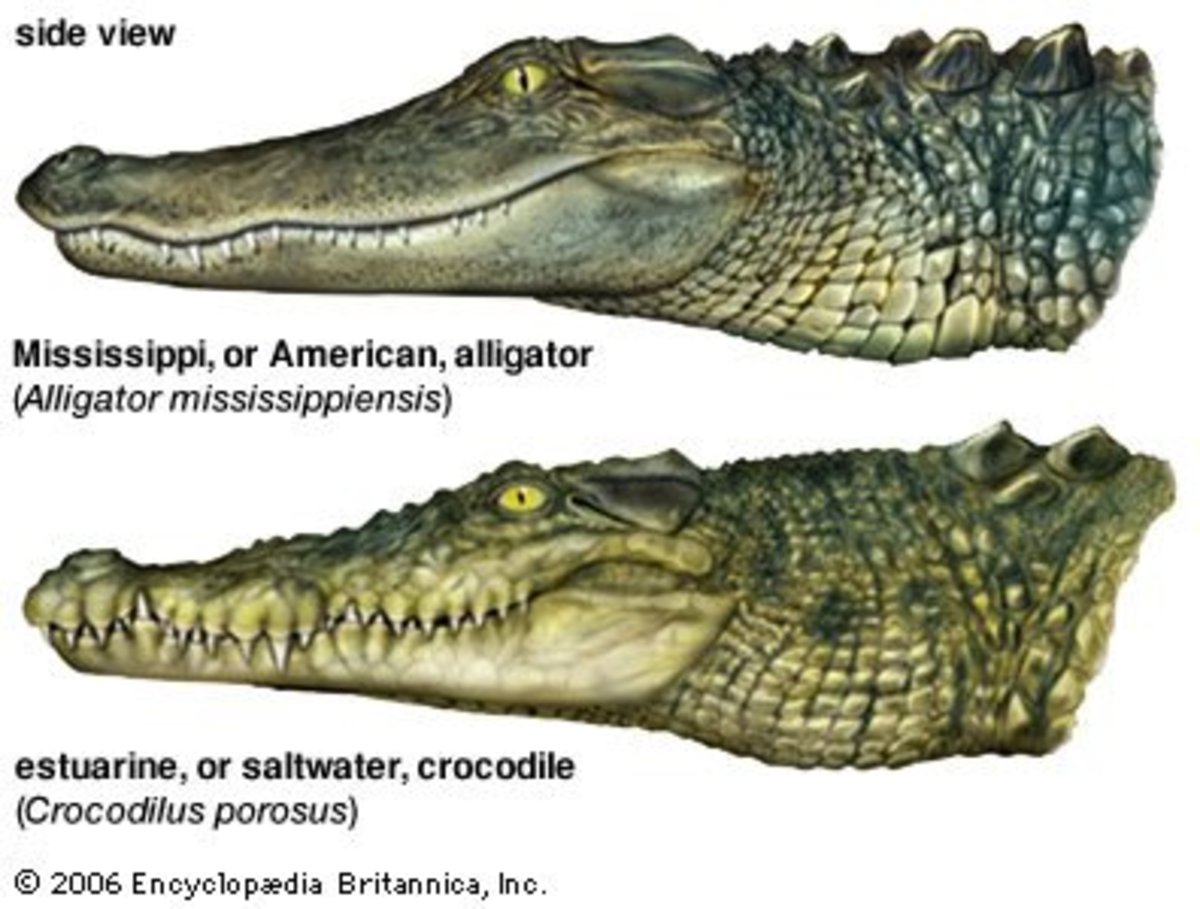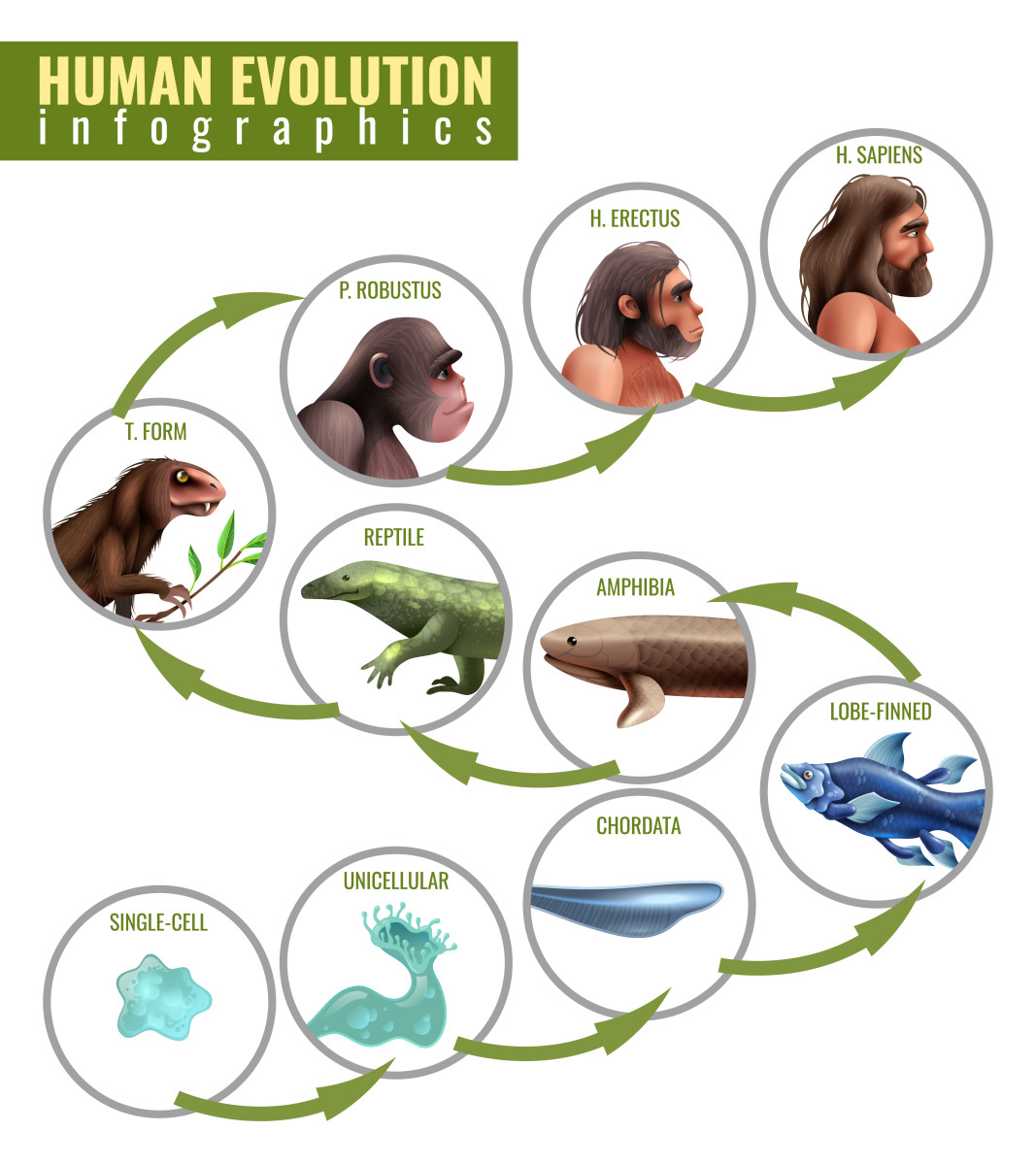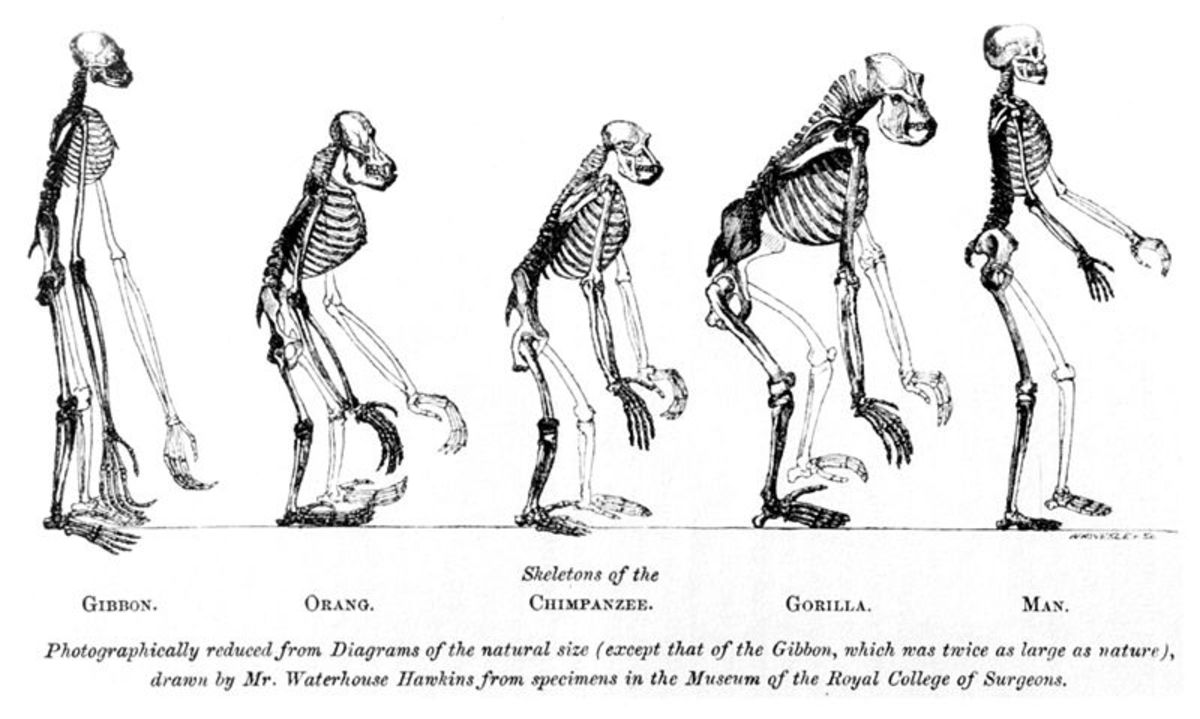Reptiles: Freaky Evolutions
Evolution
In the article Dinosaurs With Feathers: Fascinating Aspects I wrote about how it was scientifically proven that dinosaurs did possess feathers and how that contributed in them eventually evolving into birds. In the article Birds: Freaky Evolutions I talked about how the birds themselves have evolved their own traits to help survive in an ever-changing environment. And most of those traits were pretty horrific or freaky looking. But birds were not the only species to evolve their own set of questionable traits. Reptiles have also gained some questionable traits over the years. While birds evolved from dinosaurs to better adapt to the changing environment following the event that wiped out all of the dinosaurs, all of the other modern species of animals today were descended from prehistoric animals that survived the same event. Thus, it made sense that reptiles evolved their own freaky evolutions. One good species of reptile that gained some strange evolutionary traits were the turtles, reptiles that literally have their own home fused with their body. Snakes were another species of reptile to evolve some freaky evolutionary traits, other than their legless bodies. As for giant reptiles like alligators and crocodiles, while they looked the least altered compared to their ancestors, some members of the group of reptilians developed their own unique evolutionary traits. Living in a diverse amount of environments meant that reptiles had to develop their own unique evolutionary traits all for the sake of survival. By a human's perspective however, these evolutionary traits may seem strange.
Alligator Snapping Turtle
Turtles came in all sorts of shapes and sizes. Some were big, some were small, and some looked like they belonged in a monster movie if they were only a couple stories bigger. Referred to as the Alligator Snapping Turtle, this species of turtle looked like it belonged in a Japanese monster movie. One aspect about Alligator Snapping Turtles was that they did not move very often. In regards to their anatomy, most of their movement came from their mouths. The freaky thing about this turtle's evolution was that for such a relatively small reptile, it possessed a ridiculously high bite strength. With the second strongest jaw compared to any animal known to man, the Alligator Snapping Turtle also had the second strongest jaw pressure bite of any animal in the world. At 1,500 pounds per square inch, it was ironic that this species of turtle usually preyed on creatures that normally did not require so much strength to consume. And while it could not move extremely fast underwater to catch food, it compensated by developing an interesting method at getting food. Inside of its mouth there was a lure. By keeping its mouth open and getting fish to examine its lure, the Alligator Snapping Turtle could quickly shut its mouth and it whatever animal was trapped inside its mouth. Other than have a ridiculously strong bite, Alligator Snapping Turtles could also reach some astoundingly old ages. With evidence like musket balls from the Civil War embedded inside the shells of some Alligator Snapping Turtles, this meant that this creature could reach hundreds of years in age.
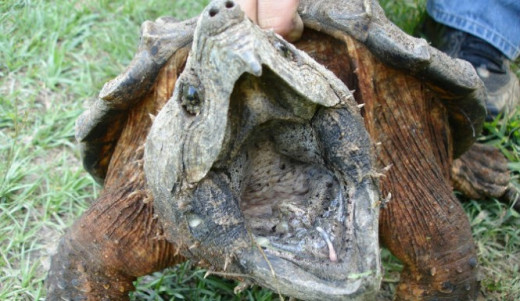
Anaconda
Snakes were, in general, freaky enough as is. These were reptiles that lived their entire lives without legs, certain species of snake had abilities that allowed them to make sounds with their tails or make part of their body into a hood, and some snakes generally had unique physical aesthetics that made them all individualized from each other. Take anacondas, for instance. This was a species of snake that was able to survive as long as it did by growing to some huge sizes. Some freaky aspects about anacondas was that they were able to feed on huge animals by squeezing them with their bodies and swallowing them whole, this was a snake that could move surprisingly quick both on land and in the water, and some species of anaconda were known to eat humans. This snake was essentially the apex predator of whatever area it decided to call its home, and there was not a lot that could be done by the animals to change things. Even the mating rituals of anacondas and snakes in general was freaky. All males possessed a spur that were used to make females want to mate with the male. What was both freaky and interesting about this spur was that scientists used the purpose of the spur as a basis to the idea that the claws of a T-Rex were used for mating. Since both creatures ha claws that looked like they barely served a purpose in the practical sense, scientists guessed that since one set of useless claws were used for mating, then the other set of claws served the same purpose.
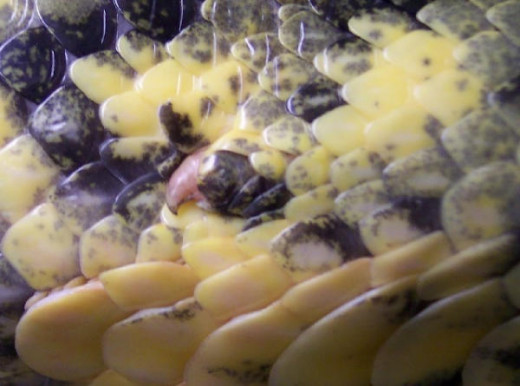
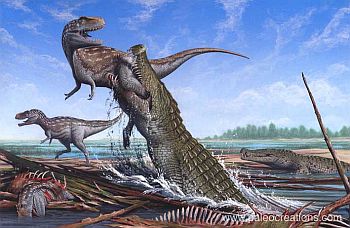
Crocodilians
Some creatures wee freaky in that they were only slightly different from their ancestors. For crocodilians, or alligators, crocodiles, caimans, and gharials, they were a good example about how evolution would favor the body of an animal, but not the size. Deinosuchus, an ancestor for all crocodilians, was a giant-sized reptile who was capable of going up against the dinosaurs that inhabited the prehistoric areas it inhabited. In fact, there were many different ancestors of crocodilians and they had different body types which allowed them to do thing modern crocodilians were incapable of doing. What made the evolution of the modern crocodilian freaky was the general sameness shared in their anatomy. This group of reptiles were four-legged, this group of reptiles were generally carnivorous, and they all possessed tails to aid in balancing their bodies. However, once the event that killed all of the dinosaurs happened, certain changes had to happen for this species to survive. So with the alteration of size, crocodilians became the somewhat smaller reptiles that exist today. Of course, as predators, this species of reptile can be both creepy and scary at the same time. See, as reptiles who lived primarily in the water, this species of reptile developed its own ways of getting food. First it used the murkiness of the water so that the victim would be unaware of the predator's location. Then when the prey was caught, the crocodilian then twisted and turned until the victim was too exhausted to move. Finally, the crocodilian could proceed to eat whatever it caught. And with reports of some members of this species harming or eating humans, this was a predator that has been very successful in adapting to change.
Reptiles
Evolution can cause strange and wonderful things to occur in different species of animals. For reptiles, while some evolutionary aspects were retained from their prehistoric ancestors, some specimens have developed their own unique adaptations to help them survive. Some of these adaptations even helped make some specimens the apex predator of their territory. Alligator Snapping Turtles, for example, received adaptations that made them capable of getting enough food to sustain itself without moving, in addition to a long lifespan and this turtle was capable of being major predator in its territory for a long time. Snakes, already one of nature's freakier creatures, achieved its ability to be successful hunters by having different adaptations for different environments, but the anaconda's ability to reach humongous sizes allowed it to be the top predator in the rain forests it inhabited, so much so that humans were a potential source of food for them. Even alligators and crocodiles have had some freaky evolutionary traits. Mostly because of the fact that this species of reptile only received relatively minor changes over the years, mostly by how big they could get.


